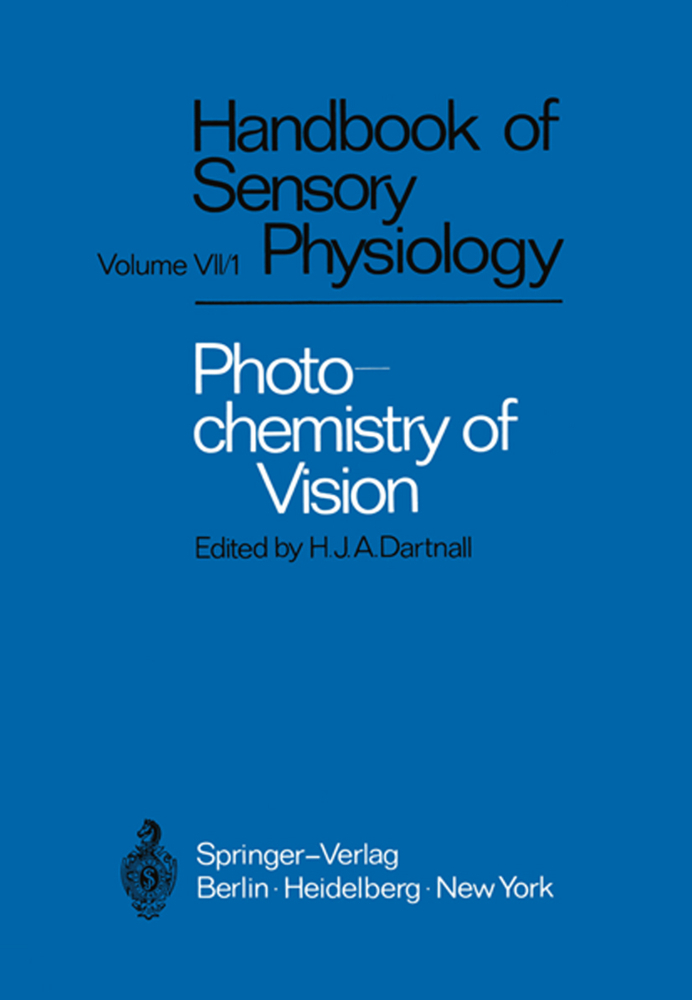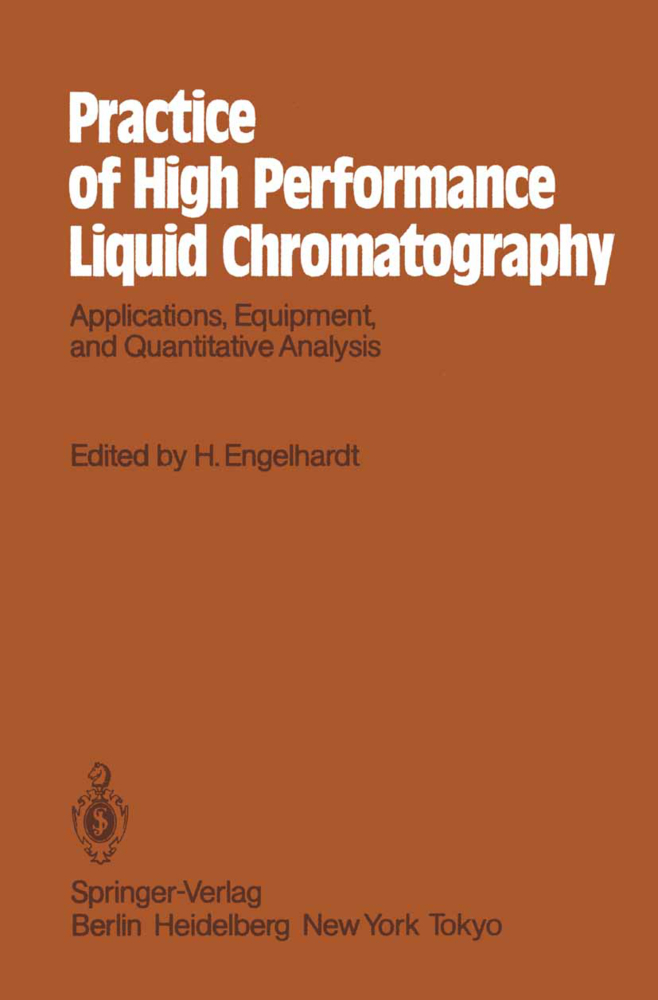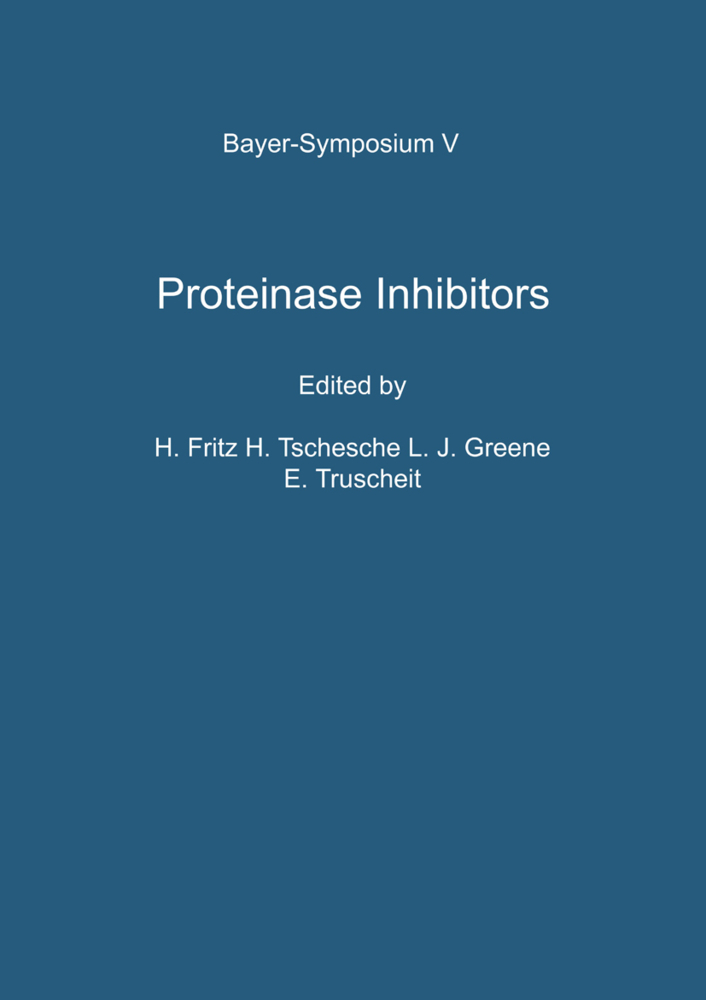Photochemistry of Vision
Photochemistry of Vision
Radiation can only affect matter if absorbed by it. Within the broad range of 300-1000 nm, which we call "the visible", light quanta are energetic enough to produce excited electronic states in the atoms and molecules that absorb them. In these states the molecules may have quite different properties from those in their dormant condition, and reactions that would not otherwise occur become possible. About 80 % of the radiant energy emitted by our sun lies in this fertile band, and so long as the sun's surface temperature is maintained at about 6000° C this state of affairs will continue. This and the transparency of our atmosphere and waters have allowed the generation and evolution of life. Before life began the atmosphere probably also transmitted much of the solar short-wave radiation, but with the rise of vegetation a new product - oxygen - appeared and this, by a photochemical reaction in the upper atmosphere, led to the ozone layer that now protects us from the energetic "short-wave" quanta that once, perhaps, took part in the generation of life-molecules. Light is an ideal sensory stimulus. It travels in straight lines at great speed and, consequently, can be made to form an image from which an animal can make "true", continuous and immediate assessments of present and impending events.
3 The Structure, Spectra, and Reactivity of Visual Pigments. By E. W. Abrahamson and J. R. Wiesenfeld. With 18 Figures
4 Photosensitivity. By H. J. A. Dartnall. With 8 Figures
5 The Behaviour of Visual Pigments at Low Temperatures. By T. Yoshizawa. With 19 Figures
6 The Circular Dichroism and Optical Rotatory Dispersion of Visual Pigments. By T. I. Shaw. With 6 Figures
7 Physical Changes Induced by Light in the Rod Outer Segment of Vertebrates. By G. Falk and P. Fatt. With 3 Figures
8 The Visual Cells and Visual Pigments of the Vertebrate Eye. By F. Crescitelli. With 30 Figures
9 Visual Pigments in Man. By W. A. H. Rushton. With 12 Figures
10 The Regeneration and Renewal of Visual Pigment in Vertebrates. By Ch. Baumann. With 5 Figures
11 The Rhodopsin-Porphyropsin Visual System. By C. D. B. Bridges. With 37 Figures
12 Microspectrophotometry of Photoreceptors. By P. A. Liebman. With 14 Figures
13 Inert Absorbing and Reflecting Pigments. By W. R. A. Muntz. With 16 Figures
14 The Adaptation of Visual Pigments to the Photic Environment. By J. N. Lythgoe. With 18 Figures
15 List of Vertebrate Visual Pigments. By J. N. Lythgoe
16 Structure of Invertebrate Photoreceptors. By R. M. Eakin. With 59 Figures
17 The Natural History of Invertebrate Visual Pigments. By T. H. Goldsmith. With 9 Figures
18 Cephalopod Retinochrome. By T. Hara and R. Hara. With 15 Figures.
1 Principles of the Interaction of Light and Matter. By E. W. Abrahamson and S. M. Japar. With 15 Figures
2 The Chemistry of the Visual Pigments. By R. A. Morton. With 12 Figures3 The Structure, Spectra, and Reactivity of Visual Pigments. By E. W. Abrahamson and J. R. Wiesenfeld. With 18 Figures
4 Photosensitivity. By H. J. A. Dartnall. With 8 Figures
5 The Behaviour of Visual Pigments at Low Temperatures. By T. Yoshizawa. With 19 Figures
6 The Circular Dichroism and Optical Rotatory Dispersion of Visual Pigments. By T. I. Shaw. With 6 Figures
7 Physical Changes Induced by Light in the Rod Outer Segment of Vertebrates. By G. Falk and P. Fatt. With 3 Figures
8 The Visual Cells and Visual Pigments of the Vertebrate Eye. By F. Crescitelli. With 30 Figures
9 Visual Pigments in Man. By W. A. H. Rushton. With 12 Figures
10 The Regeneration and Renewal of Visual Pigment in Vertebrates. By Ch. Baumann. With 5 Figures
11 The Rhodopsin-Porphyropsin Visual System. By C. D. B. Bridges. With 37 Figures
12 Microspectrophotometry of Photoreceptors. By P. A. Liebman. With 14 Figures
13 Inert Absorbing and Reflecting Pigments. By W. R. A. Muntz. With 16 Figures
14 The Adaptation of Visual Pigments to the Photic Environment. By J. N. Lythgoe. With 18 Figures
15 List of Vertebrate Visual Pigments. By J. N. Lythgoe
16 Structure of Invertebrate Photoreceptors. By R. M. Eakin. With 59 Figures
17 The Natural History of Invertebrate Visual Pigments. By T. H. Goldsmith. With 9 Figures
18 Cephalopod Retinochrome. By T. Hara and R. Hara. With 15 Figures.
Dartnall, Herbert J.A.
| ISBN | 978-3-642-65068-0 |
|---|---|
| Artikelnummer | 9783642650680 |
| Medientyp | Buch |
| Auflage | Softcover reprint of the original 1st ed. 1972 |
| Copyrightjahr | 2011 |
| Verlag | Springer, Berlin |
| Umfang | XII, 848 Seiten |
| Abbildungen | XII, 848 p. |
| Sprache | Englisch |











